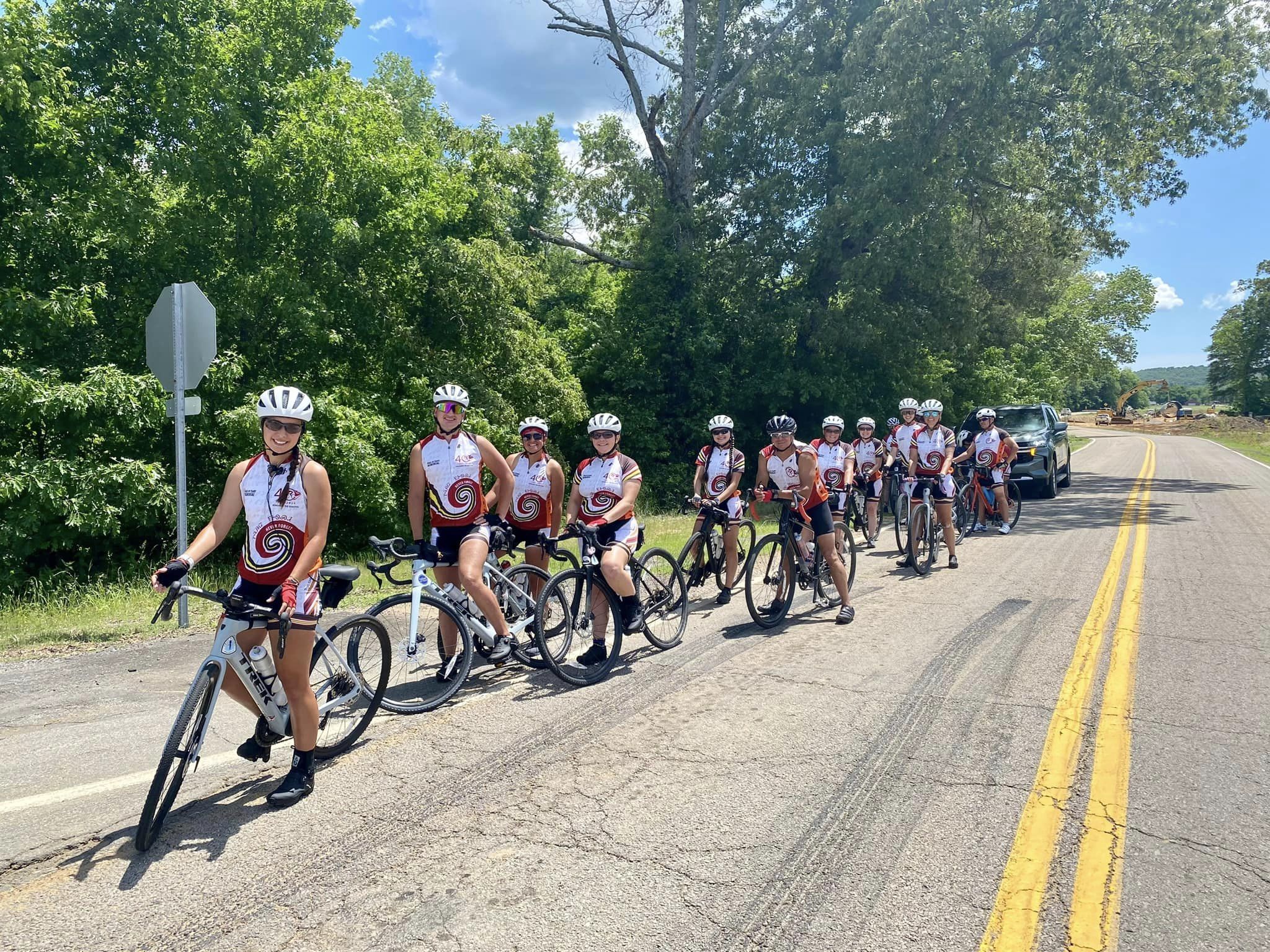
- Details
- By Chuck Hoskin Jr
Guest Opinion. Every Cherokee inherits a commitment – an ongoing challenge – to move forward as we remember our past. Even as our tribe discovers new prosperity and growth, we remember our ancestors and the traditions they strove through hardship to preserve.
Acknowledging this challenge, it’s more important than ever to seek connections to our past. Cherokee Nation offers more and more opportunities to connect, including through events such as Cherokee National Holiday, online Cherokee language classes or simply conversing with our elders at monthly luncheons. It is vital to our growth that citizens actively engage with these cultural offerings.
One of the most incredible connections to our past, the Remember the Removal Bike Ride, celebrates a 40th anniversary this year. The annual event honors the legacy of 16,000 Cherokees who were forcibly removed from their homeland in 1838 and the 4,000 – one out of four – who perished during the brutal march.
The Remember the Removal Bike Ride is one of the most valuable cultural activities Cherokee Nation supports, deeply connecting youthful Cherokees to our history. Participants journey to Cherokee Nation’s former capital, New Echota, Georgia. There, they meet with Eastern Band of Cherokee Indians leaders and riders before starting out on a three-week path along the Trail of Tears.
The ride stops at Cherokee gravesites and historic landmarks, including Blythe Ferry, Tennessee, which marks the westernmost edge of the old Cherokee Nation and the last time many Cherokees saw their home. It is an exhilarating journey with somber checkpoints for reflection.
Riders pedal about 950 miles across seven states, closely following the northern route of the trail that many of our tribe marched and survived. In 40 years, Remember the Removal riders have traveled more than 38,000 miles through wind, rain and punishing heat.

The youthful cyclists, along with the mentor riders, bond as they learn about their proud past, glimpse their ancestors’ darkest days and discover their own strength. Upon completion in Tahlequah, weary participants rejoin their families and communities. Most importantly they share their experience, which lets even more Cherokees connect with our shared past. After four decades, we now have generations of riders who carry a tangible, living bond to the past.
Understanding this sorrowful time in Cherokee history gets more difficult to grasp with every year. I am deeply grateful to the riders each year for their accomplishment, which truly honors the legacy of our ancestors. Remember the Removal riders keep our darkest days and triumphs over adversity in reach.
This year’s class of riders who will represent the Cherokee people on the 40th anniversary Remember the Removal Ride are:
- Taylor Armbrister, 25, Kansas
- Shawna Baker, 46, Tulsa
- Jaslyn Christie, 19, Park Hill
- Camerin Fite James, 24, Fort Gibson
- Heather Fite, 46, Fort Gibson
- Jasmine Goodman, 24, Fort Gibson
- Kiyah Holmes, 24, Muskogee
- Lexi Melton, 23, Vinita
- Ashawna Miles, 50, Tahlequah
- Hannah Neugin, 19, Lost City
- Kristy Ross, 49, Locust Grove
- Jaxen Smith, 22, Tahlequah
They depart the Cherokee Nation Reservation on May 28 and we encourage all Cherokees and friends to follow along during the journey through the ride’s social media account.
Chuck Hoskin, Jr. is the principal chief of the Cherokee Nation.
More Stories Like This
Technology Rooted in Tradition is Strengthening Cherokee NationTribes Do Not Need a Greenlight to Build Renewable Energy
Law Should Not Get in the Way When "Manifest-ing Destiny"
Celebrating 35 Years of Gaming Success
My Tribe’s ICE Contract Betrayed Our Values
Help us defend tribal sovereignty.
At Native News Online, our mission is rooted in telling the stories that strengthen sovereignty and uplift Indigenous voices — not just at year’s end, but every single day.
Because of your generosity last year, we were able to keep our reporters on the ground in tribal communities, at national gatherings and in the halls of Congress — covering the issues that matter most to Indian Country: sovereignty, culture, education, health and economic opportunity.
That support sustained us through a tough year in 2025. Now, as we look to the year ahead, we need your help right now to ensure warrior journalism remains strong — reporting that defends tribal sovereignty, amplifies Native truth, and holds power accountable.
 The stakes couldn't be higher. Your support keeps Native voices heard, Native stories told and Native sovereignty defended.
The stakes couldn't be higher. Your support keeps Native voices heard, Native stories told and Native sovereignty defended.
Stand with Warrior Journalism today.
Levi Rickert (Potawatomi), Editor & Publisher

